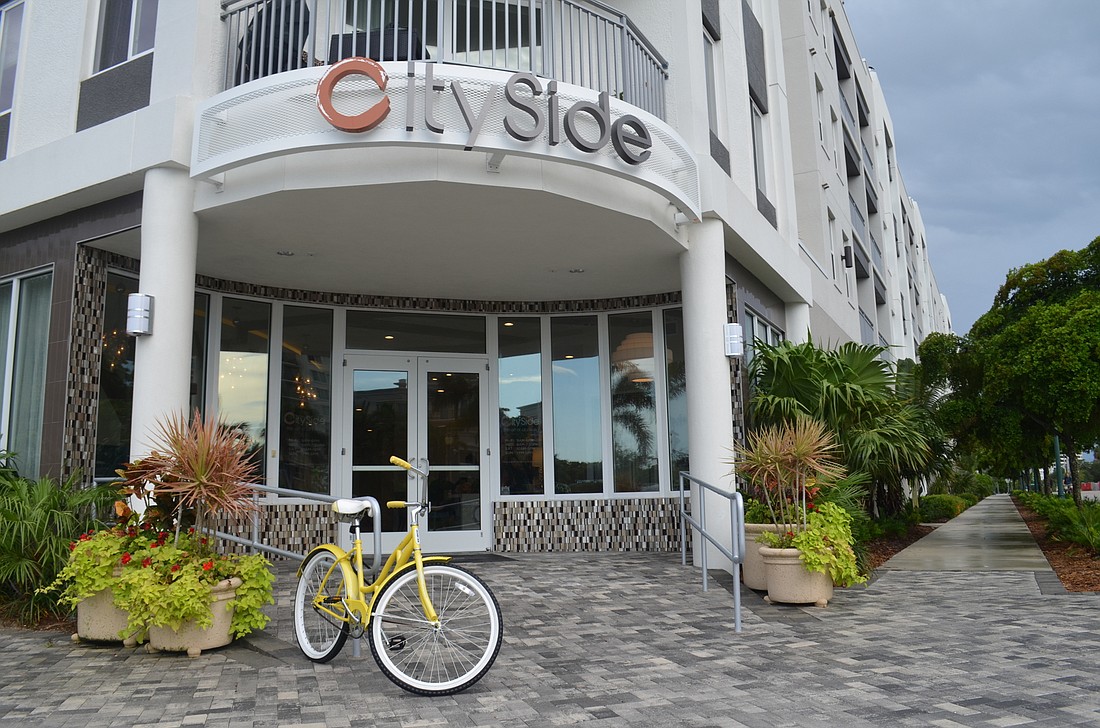- December 15, 2025
-
-
Loading

Loading

As the city considers the future of building regulations in the Rosemary District, officials and neighborhood stakeholders are evaluating whether the Rosemary Residential Overlay District was a success.
Approved in 2014, the overlay district offered increased density within the neighborhood, allowing developers to build 75 residential units per acre instead of 25. The regulations mandated the average overall density in the area remain below 25 units per acre.
The move effectively jump-started the long-desired redevelopment of the neighborhood, but those in the Rosemary District have identified weaknesses in the ongoing growth. At a Nov. 1 neighborhood meeting, Rosemary property owner Howard Davis outlined some of the issues he’s heard.
The new apartments may be less expensive than others downtown, but they’re still not affordable for a broad swath of Sarasota residents. The neighborhood isn’t getting any more open space. There’s not a lot of new commercial space. The public realm isn’t being improved.
Davis, the leader of a grassroots Rosemary District planning initiative, summed up the neighborhood’s concerns about new projects in one question.
“What are they giving back to the community?” Davis asked.
It’s an opportune moment for the Rosemary District to grapple with that question. As of this summer, there were more than 1,500 existing or approved residential units within the overlay area. That’s 85% of the way to the 1,775-unit cap the city incorporated into the district.
“It’s time to recalibrate.” — Howard Davis
In June, the City Commission asked staff to write an ordinance that would revert the entire neighborhood to a maximum density of 25 units per acre once that cap is hit. At the same time, the commission asked staff to prepare a revised overlay district that would allow a maximum of 75 units per acre — as long as it fostered the development of affordable housing.
City staff is seeking neighborhood input on what new regulations should look like. Now, those in the Rosemary District are examining their priorities, pondering how it might fit into a new Rosemary Residential Overlay District.
“It’s time to recalibrate,” Davis said. “It doesn’t make sense to say, ‘Let’s just do it again.’ I think everybody would like to see some fine-tuning and some differences.”
On Nov. 1, Davis outlined a straightforward concept for new regulations: Keep offering increased density, but in exchange, make developers provide something of benefit to the Rosemary District as a whole.
Those benefits could take different forms. A builder could create more affordable housing. A project could include public parkland, or extra public artwork, or offer wider sidewalks. The Rosemary District planning group didn’t want to get bogged down in specifics at this point, but in general, Davis proposed a right to build more units could become an incentive for private investment in neighborhood improvements.
“If you want more density, please help us achieve some of the objectives of the community,” Davis said.
City Planning Director Steve Cover, who attended the Nov. 1 meeting, said community input would play a big role in staff’s final recommendations. He said the idea Davis discussed was similar to what the city was already considering, and the incentives are a concept in keeping with common planning strategy.
He also said an incentive-focused density bonus mirrors ideas outlined in the city’s forthcoming form-based zoning code.
“I think that’s the direction we want to go with this,” Cover said. “I think it’s consistent with the community report and consistent with the general thoughts of the form-based code.”
Not everyone in the Rosemary District is excited by the concept of more high-density developments. At an October neighborhood association meeting, multiple people expressed a desire to first assess the impact of the already approved residential units before authorizing a new overlay district.
Cover knows some Sarasota residents have voiced concern about increased density in general, associating the idea with an increased burden on roadways and other public goods. But Cover said well-planned density increases could help achieve community goals — including affordability and walkability — without straining a neighborhood.
“Density isn’t always a bad word,” Cover said. “It isn’t always a bad thing, particularly when you’re dealing with cities.”
“Density isn’t always a bad word.” — Steve Cover
Karin Murphy, the primary author of the proposed form-based code, agreed with Cover’s assessment. She, too, was excited by the concepts Davis and the Rosemary District planning group have shared.
The form-based code includes a potential citywide density bonus system, offering developers the right to build more units in exchange for affordable housing, green space or transportation commitments. Murphy said the code can be specifically tailored to the desires of the Rosemary District if the neighborhood wants to offer builders even more opportunities for improving the surrounding area.
In addition to more affordable housing and green space, Cover said staff will attempt to foster more commercial development in the Rosemary District going forward.
“The last thing you want is a bunch of residential buildings, and all they have is the entrance lobbies on the ground floor and nothing else,” Cover said. “You lose that vitality and interest at the street level you’re looking for.”
Cover said it’s unclear when staff will return to the commission with proposals for new zoning regulations in the Rosemary District. Already, however, there’s a sense of energy among planning staff members who see an opportunity to craft a dynamic mixed-use neighborhood near downtown.
“Ultimately, we’re going to come up with something really exciting here that’s even better than what we have currently,” Cover said.